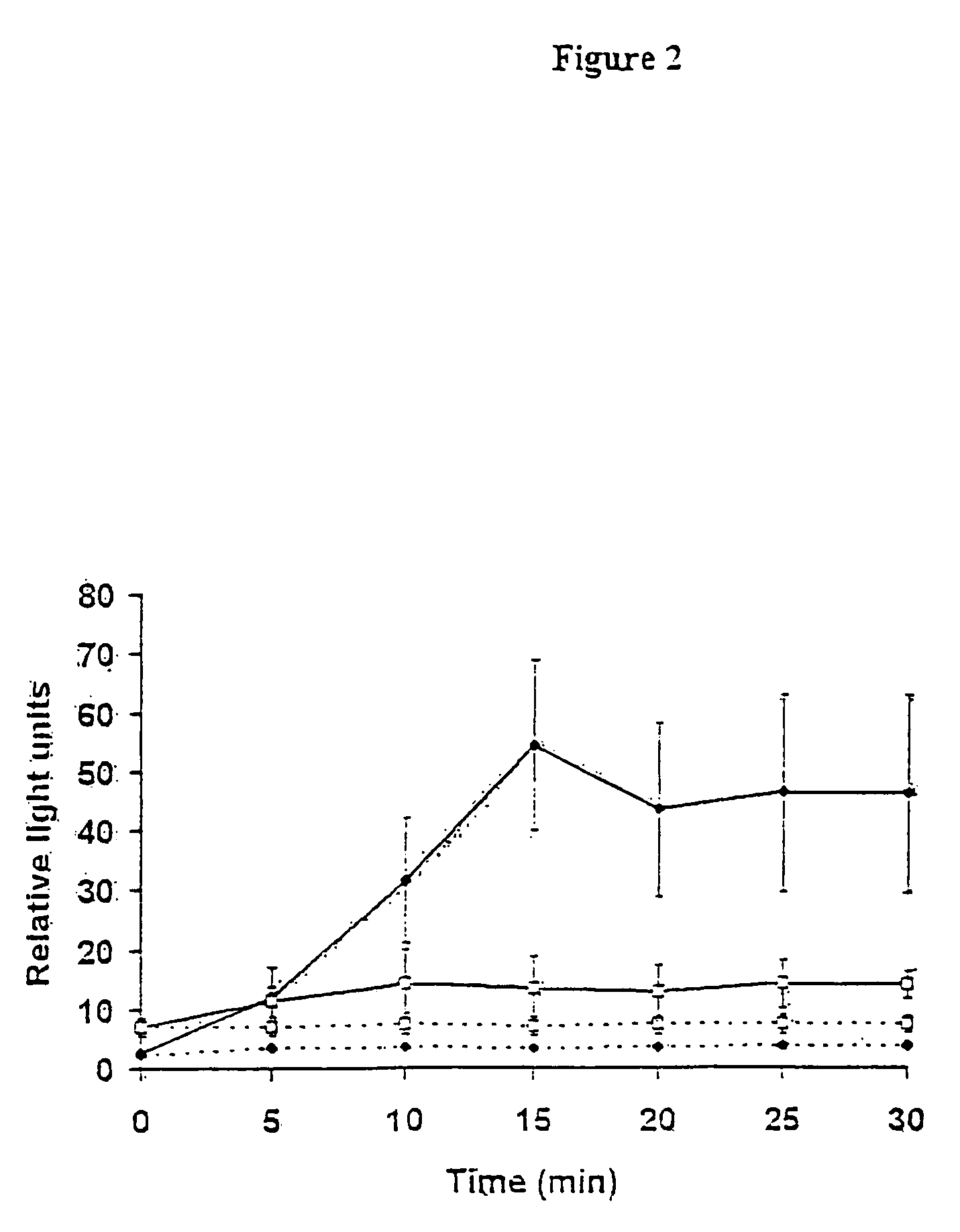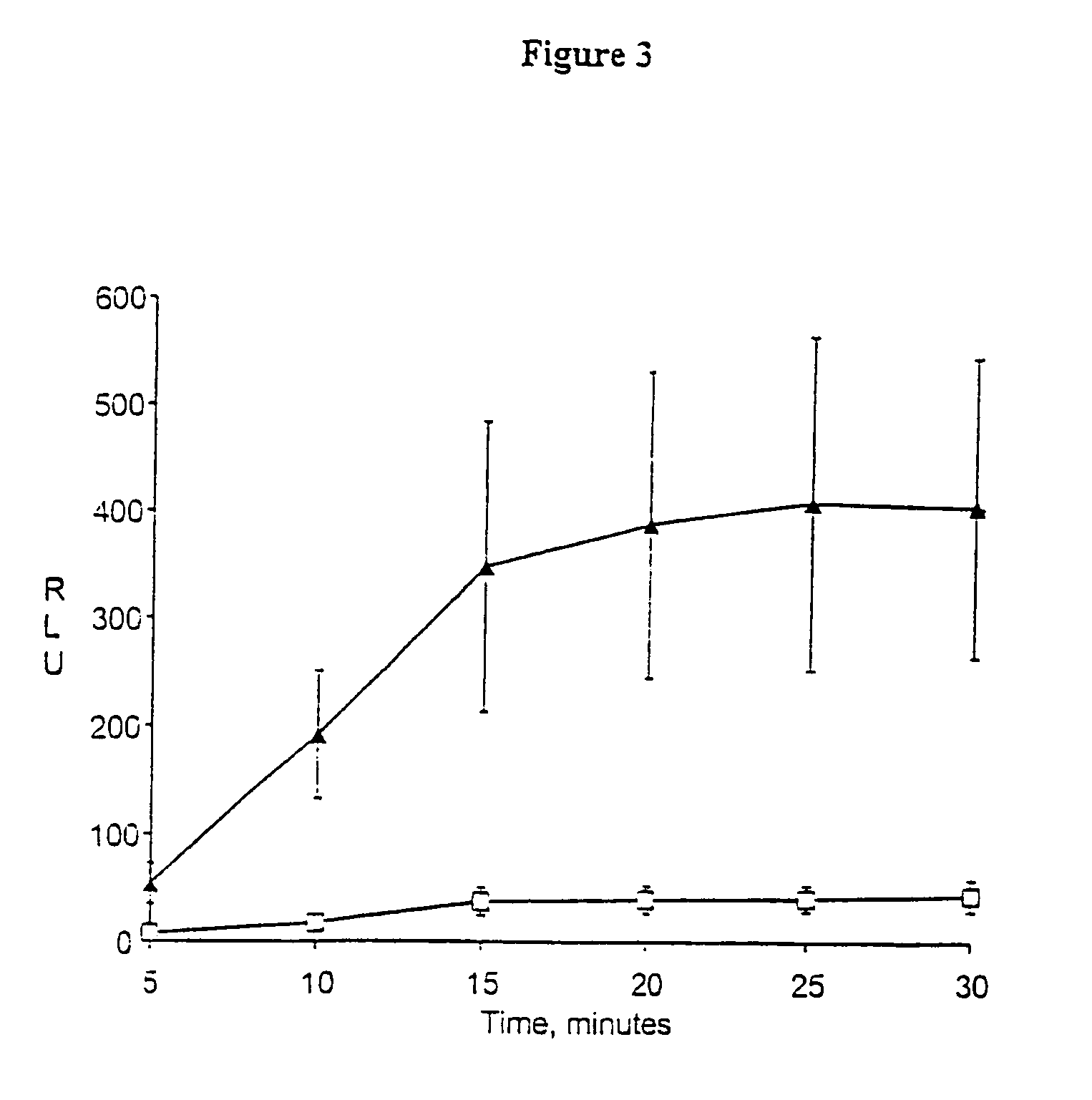Determining coping capacity after exposure to a psychological stressor
a psychological stressor and coping capacity technology, applied in the field of vertebrate biology, can solve the problems of not being able to provide an objective measure of stress, questioning may not always be answered honestly, and the measure of stress cannot be used in testing animals or birds, so as to improve the coping capacity, the effect of reducing the risk of infection
- Summary
- Abstract
- Description
- Claims
- Application Information
AI Technical Summary
Benefits of technology
Problems solved by technology
Method used
Image
Examples
example 1
Trapping and Transport of Wild Badgers
[0043]As indicated above, this study was carried out to test the prediction that transport of badgers causes substantial additional psychological stress compared to trapping of such animals without transport as reflected in lower coping capacity determined from residual capacity of blood neutrophils for in vitro activation.
Methods
[0044](a) Trapping and Transporting Badgers
[0045]Badgers were trapped in Wytham Woods, Oxfordshire, U.K (for details of the study site and its badger population see Macdonald & Newman (2002) J. Zool. 256, 121-138) in cage traps baited with peanuts in August and November 2001. Badgers were selected because a measure of stress for this species would be immediately useful in studies of its unusual social system (Macdonald & Newman 2002) and its role in the epidemiology of bovine TB. Also, studies, conservation and control of badgers necessitate their capture and handling, so a means of evaluating alternative procedures wou...
example 2
Quantification of Stress Induced by Handling of Wild Small Animals
[0058]The purpose of this study was to investigate the stress response to handling in small wild animals, more particularly in wood mice (Apodemus sylvaticus) and bank voles (Clethrionomys glareolus), by measuring the ability of animals' circulating leucocytes to produce superoxide in response to PMA challenge.
Methods
[0059](a) Experimental Design
[0060]One group of animals was handled in the same way as for ecological or behavioural studies and then anaesthetised. Handling brings about a stress response typified by an increased heart rate and attempted escape behaviour and handling is generally stressful for wild animals. Another group of animals was anaesthetised without handling. Handled animals were removed from their traps by gently tipping them into a plastic bag, and were then handled by their scruff, identified to species and placed in a holding pot and anaesthetised. Non-handled animals were anaesthetised in th...
example 3
Observing a Fictitious Stressful Event
[0071]The purpose of this study was to assess the effect of watching a potentially stressful event on human volunteers.
Methods
[0072](a) Subjects
[0073]Local ethical committee approval from Coventry University Ethics Committee and informed consent was obtained before this study commenced, in accordance with the declaration of Helsinlki. 14 subjects all moderately fit and healthy aged between 20-26 participated in the study. Exclusion criteria included suffering from psychiatric illness, respiratory or cardiovascular disease, smokers, or prescription medicine taken within the previous month.
[0074](b) Design
[0075]The experiments were performed in the afternoon according to highly standardised procedures. Subjects were instructed to avoid exercise or alcohol for 48 hours before the study and be fasting for 2 hours before the study began. Both groups sat quietly for 15 minutes to obtain resting blood pressure, heart rate and resting blood samples. Blo...
PUM
| Property | Measurement | Unit |
|---|---|---|
| temperature | aaaaa | aaaaa |
| time | aaaaa | aaaaa |
| molecular weight | aaaaa | aaaaa |
Abstract
Description
Claims
Application Information
 Login to View More
Login to View More - R&D
- Intellectual Property
- Life Sciences
- Materials
- Tech Scout
- Unparalleled Data Quality
- Higher Quality Content
- 60% Fewer Hallucinations
Browse by: Latest US Patents, China's latest patents, Technical Efficacy Thesaurus, Application Domain, Technology Topic, Popular Technical Reports.
© 2025 PatSnap. All rights reserved.Legal|Privacy policy|Modern Slavery Act Transparency Statement|Sitemap|About US| Contact US: help@patsnap.com



